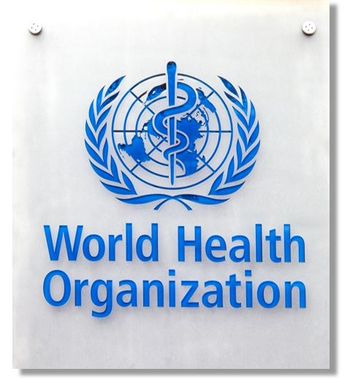
Man With Increasing Knee Pain
A 52-year-old man complains of right knee pain that hasbeen increasing steadily for several weeks. Two years earlierhe underwent a total arthroplasty of the same knee to treatsevere osteoarthritis secondary to a meniscal injury. He hasno history of recent trauma or increased activity.
A 52-year-old man complains of right knee pain that hasbeen increasing steadily for several weeks. Two years earlierhe underwent a total arthroplasty of the same knee to treatsevere osteoarthritis secondary to a meniscal injury. He hasno history of recent trauma or increased activity.
The patient is mildly obese and has significant difficultywalking because of his knee pain. Temperature is 37.2oC(99oF); heart rate, 85 beats per minute; respiration rate,22 breaths per minute; and blood pressure, 132/83 mm Hg.Heart and lungs are normal. Active and passive range ofmotion in the right knee is significantly reduced; there is amoderate joint effusion in the suprapatella fossa and milderythema. Pulses are intact in both lower legs. Radiographsof the right knee are unrevealing.
Which diagnostic test would you order next-and why?
WHICH TEST--AND WHY: The best test in this setting is a3-phase nuclear medicine bone scan. It can detect looseningof the prosthetic components and help rule out infection.
Distinguishing between infection and aseptic looseningis extremely important because the treatment ofthese 2 entities is dramatically different. Aseptic looseningcan be treated with a single-stage revision. Treatment ofinfected prosthetic components, on the other hand, ismore complex; it involves removal of the prosthetic componentsfollowed by a long course of antibiotics. Once theinfection has fully cleared, a revision arthroplasty can beperformed.
Results of the bone scan. A bone scan is only 50%to 70% accurate in the diagnosis of infection. However,it is useful in this setting because normal results excludeinfection and make loosening of the prosthetic componentsunlikely. Here, the bone scan demonstrates increasedactivity in the 3 components of the prosthesis(Figure 1). This suggests infection of the prosthetic com-ponents. However, it is a relatively nonspecific finding, andthis pattern is also seen at times in aseptic loosening.
What test would you order now?
WHICH TEST--AND WHY:
An
indium-111-labeled whiteblood cell scan with sulfur colloid subtraction
can provide diagnosticclarification. This study is 90% accurate for infectionin this setting. The radio-labeled white cells migrateto areas of infection and to the adjacent marrow, while thesulfur colloid migrates only to the marrow. Hence, areasof increased activity on the indium scan that are not seenon the sulfur colloid scan are infected.An interesting feature of this study is that the 2 pharmaceuticalscan be imaged simultaneously--since moderngamma cameras can discriminate between differing energieswith a high degree of accuracy (the indium emitsgamma rays at energies of 170 and 240 keV, while the technetiumsulfur colloid emits gamma rays at 140 keV). Thissaves camera time and allows the image that will be subtractedto be perfectly superimposed on the base image.
Results of indium scan with sulfur colloid subtraction.
The frontal and lateral images of the knees show thesame pattern: increased activity in the tibial component ofthe prosthesis on the right (Figure 2) that correspondswith an area of increased activity in the marrow (Figure3). Thus, no focal areas of infection are identified. The leftknee is unremarkable.
Outcome of this case.
Three days after the examination,a single-stage revision of the total knee arthroplastywas performed. No signs of infection were found. Onemonth after the procedure, the patient's knee pain hadsignificantly decreased.
Newsletter
Enhance your clinical practice with the Patient Care newsletter, offering the latest evidence-based guidelines, diagnostic insights, and treatment strategies for primary care physicians.

















































































































































































































































































